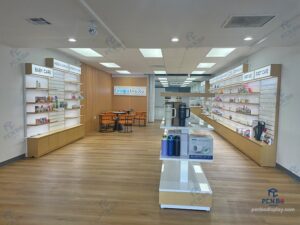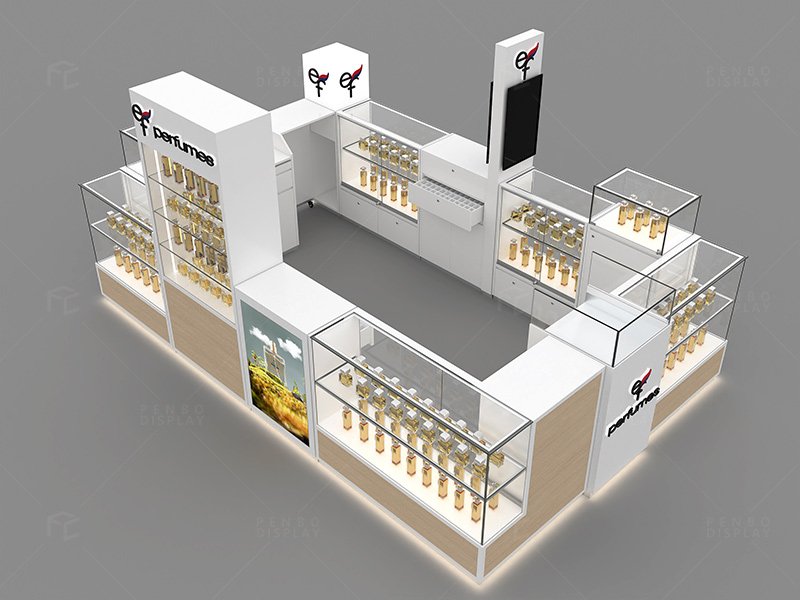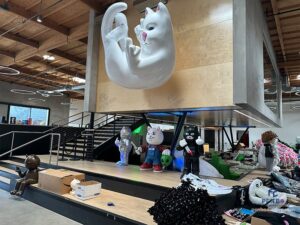
What Do I Need to Start a Perfume Kiosk? A Complete Guide for Perfume Retailers

1. Market Research and Business Planning
1.1. Conduct Market Research Before diving into the logistics, conduct thorough market research. Understand the demand for perfumes in your target area, analyze the competition, and identify potential customer segments. This research will help you determine the viability of your business and guide your decisions on location, product selection, and pricing.
1.2. Create a Business Plan A well-crafted business plan is essential for the success of your perfume kiosk. Outline your business objectives, target market, competitive analysis, marketing strategy, and financial projections. This plan will not only serve as a roadmap for your business but also be crucial if you seek financing or investors.
2. Legal and Licensing Requirements
2.1. Business Registration Legally establishing your business is the first step. Choose a business structure—such as a sole proprietorship, partnership, LLC, or corporation—and register your business name with the appropriate authorities.
2.2. Licenses and Permits Obtain the necessary licenses and permits, including a general business license, sales tax permit, and potentially a health permit. Make sure to check local regulations, as requirements can vary by location. Additionally, secure a Vendor’s License if you plan to operate in public spaces.
2.3. Insurance Protect your investment with business insurance. General liability insurance covers accidents or damages, while product liability insurance protects against claims related to the products you sell. Depending on your business model, consider additional coverage such as business interruption insurance or workers’ compensation insurance.
3. Budgeting and Financial Planning
3.1. Initial Investment Estimate the initial investment required to start your perfume kiosk. This includes perfume kiosk design and construction, inventory, permits, and marketing expenses. Depending on the scale and location, the initial setup can range from $20,000 to $60,000.
3.2. Operating Costs Plan for ongoing expenses, including rent, utilities, inventory replenishment, and staff wages. Rent for a kiosk in a high-traffic area typically ranges from $500 to $3,000 per month, while other operational costs like marketing, insurance, and utilities should also be factored into your budget.
3.3. Revenue Projections Create realistic revenue projections based on market research and competitor analysis. Consider factors like foot traffic, average transaction value, and profit margins. Perfume kiosks often enjoy profit margins of 50% to 70%, depending on the brands and exclusivity of the products you sell.
4. Designing Your Perfume Kiosk
4.1. Aesthetic Appeal The design of your kiosk is critical for attracting customers. Choose high-quality materials like glass, polished metal, or wood to create a sleek, modern look that reflects the luxury of your products. LED lighting can highlight your products and draw attention.
4.2. Functional Layout Ensure your kiosk layout is functional and customer-friendly. Display products at eye level, use varying heights for visual interest, and incorporate hidden storage solutions to keep the space organized. A well-designed layout encourages customers to browse and increases the likelihood of sales.
4.3. Branding Consistency Consistent branding across your kiosk design, signage, and packaging helps build brand recognition. Use your brand’s colors, logo, and typography to create a cohesive look that reinforces your identity.
5. Finding Reliable Suppliers
5.1. Selecting Suppliers Choosing reliable suppliers is crucial to the success of your perfume kiosk. Look for suppliers who offer authentic, high-quality products at competitive prices. Verify the authenticity of the perfumes to maintain your reputation and comply with legal requirements.
5.2. Establishing Relationships Build strong relationships with your suppliers to ensure reliable delivery and potentially negotiate better terms. Diversify your supplier base by working with both local distributors and international brands.
5.3. Inventory Management Implement an efficient inventory management system to track stock levels and sales trends. This will help you avoid overstocking or running out of popular items, allowing you to maintain a balanced inventory that meets customer demand.
6. Business Tips for Successful Operation
6.1. Customer Service Excellence Exceptional customer service differentiates your kiosk from competitors. Train your staff to be knowledgeable about fragrances, provide personalized recommendations, and create a welcoming atmosphere. A positive customer experience can lead to repeat business and word-of-mouth referrals.
6.2. Marketing and Promotion Leverage both traditional and digital marketing strategies to drive traffic to your kiosk. Utilize social media platforms to promote your products, engage with customers, and run targeted ads. In-store promotions, such as discounts and loyalty programs, can also boost sales and attract new customers.
6.3. Adapting to Trends Stay updated on industry trends and adapt your product offerings and marketing strategies accordingly. The perfume industry is dynamic, with new trends emerging regularly. Being flexible and responsive to these changes can help you stay competitive.
6.4. Sales Strategies Develop effective sales strategies to increase conversions. This could include upselling and cross-selling techniques, bundling products, or offering exclusive deals on certain items. Train your staff to recognize opportunities to maximize sales while ensuring customer satisfaction.
7. Location Selection
7.1. High-Traffic Areas Choose a location with high foot traffic, such as shopping malls, airports, or busy downtown areas. The location of your kiosk will significantly impact your visibility and sales.
7.2. Lease Negotiations Negotiate favorable lease terms that align with your budget and sales projections. Consider the length of the lease, rent escalations, and any additional costs like maintenance fees or utilities.
Conclusion
Starting a perfume kiosk involves careful planning and strategic decision-making. From conducting market research and fulfilling legal requirements to designing an attractive kiosk and selecting reliable suppliers, each step is critical to your success. By following these guidelines and staying adaptable to market trends, you can build a thriving perfume kiosk business that attracts customers and generates consistent revenue.
Share:
Shop Fixtures Manufacturer
We are a manufacturer of display products established in 1995 in Guangzhou, China. We specialize in a wide range of retail store fixtures,including display case,showcase,racks,counters,stands , etc. Providing customers with one-stop merchandising solutions.
Recent Posts
Subscribe to Newsletter
Get all the latest information on shop design ideas, sales and offers. Subscribe to the newsletter:


